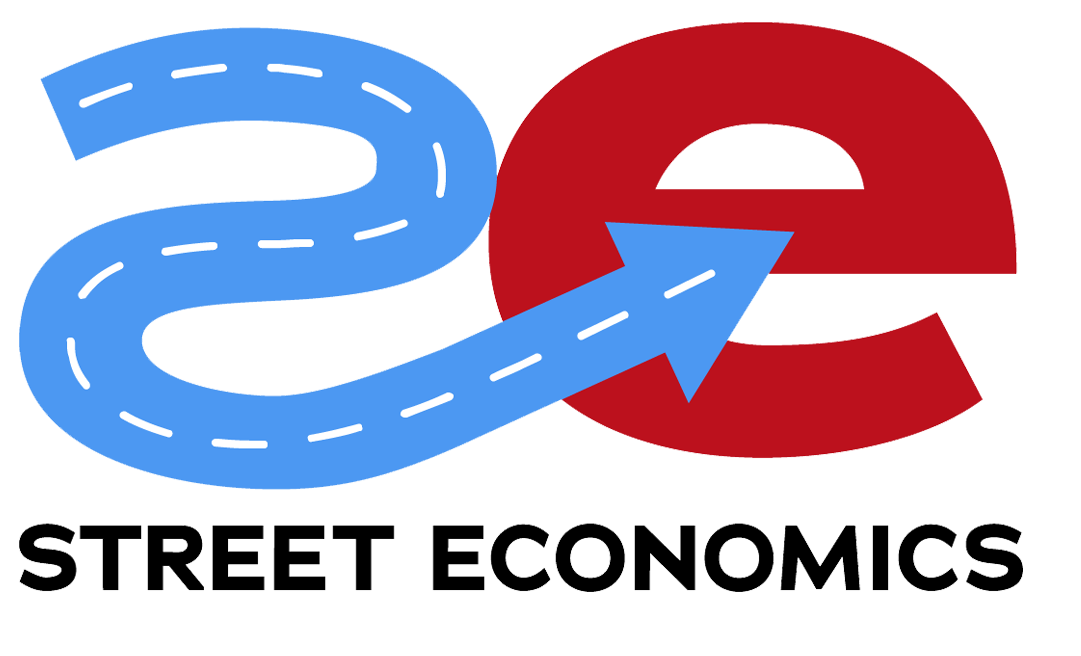BusinessFlare Take: Live Nation Entertainment just inked a deal for a 5,300-seat venue to anchor Atlanta’s $5 billion Centennial Yards Atlanta revival, proving once again that entertainment drives downtown redevelopment far more than government incentives ever could. In a post-pandemic world where office buildings sit empty across America, cities are discovering that people will show up downtown for immersive experiences but not for cubicle farms. The Atlanta project represents the next evolution in economic development: leveraging private entertainment dollars to create an urban destination that might actually stick around. With the 2026 World Cup looming, Atlanta’s betting big that concertgoers will propel an urban renaissance where conventional development tactics failed. https://propmodo.com/live-nation-venue-to-anchor-5-billion-atlanta-revival-plan/
Street Economics Insight: California officially recognizes that earning $100,000 a year amounts to poverty wages in four Bay Area counties. The Golden State’s housing market is so wildly distorted that someone making six figures in San Mateo, San Francisco, Marin, or Santa Clara qualifies as “low income” for affordable housing eligibility. When developers can’t profit building homes for people earning $100,000, you’re witnessing market failure at epic proportions. No amount of inclusionary zoning or affordable housing mandates can overcome this fundamental economic disconnect. The real solution requires addressing the extreme supply constraints (read: NIMBY) that drive this absurdity, not creating more subsidies that merely treat symptoms of a dysfunctional regulatory system. https://kfiam640.iheart.com/content/2025-05-13-earning-under-100k-now-low-income-in-parts-of-california/
Drama Meter: City of Austin leaders face mounting public anger over the deterioration of public services despite skyrocketing tax revenues. Yesterday’s airport debacle marks the third control tower staffing crisis in two months, stranding thousands of travelers when only half the required controllers showed up for work. Meanwhile, the city council approved another round of pay raises for administrative staff while rank-and-file public safety positions remain unfilled. Local residents at last night’s heated council meeting called the situation “governance malpractice,” pointing to a municipal budget that’s grown 37% in three years while basic services decline. Economic developers may warn the staffing crisis threatens Austin’s ability to attract convention business and corporate relocations. Drama Meter Reading: 8 out of 10. https://www.kxan.com/news/local/austin/faa-austin-airport-delays-blamed-on-continued-staffing-issues/
Book Drop: In a scene reminiscent of “Red Tape Empire” the Connecticut Department of Transportation spent $10.3 million on a pedestrian bridge that’s now been sitting unused for two years because agency regulations require an additional $1.7 million environmental study before the public can access it. The fully constructed bridge connecting Meriden’s train station to its downtown was completed in May 2023, but remains fenced off while bureaucrats debate who should pay for the supplemental study that wasn’t mentioned in the original permitting process. Local businesses that invested in renovations based on promised foot traffic are now filing a class-action lawsuit, citing damages from the regulatory gridlock. The absurdity reached new heights last week when the DOT spent another $50,000 to repaint the inaccessible bridge while still having no timeline for public access. https://www.ctinsider.com/news/article/meriden-pedestrian-bridge-remains-closed-18981345.php
ECOSINT Signal: Newark Airport’s third system outage in less than two weeks has sparked urgent congressional hearings on critical infrastructure vulnerabilities. What began as staffing shortages has exposed systemic failures in air traffic control technology, with economic implications reaching far beyond travel delays. Economic open source intelligence analysis indicates each major airport shutdown costs the national economy approximately $28 million per hour in lost productivity. The ripple effects include supply chain disruptions for time-sensitive cargo, business meeting cancelations, and decreased consumer spending in airport retail. Smart regional economic developers are turning this crisis into opportunity, pitching secondary markets with reliable air service as safer bets for business relocation. Watch for a potential new economic development playbook emerging around infrastructure reliability rather than just tax incentives. https://www.drudgereport.com/
Red River Flavor: New research in the Journal of Nutrition today confirms what Goodnight’s Red River Spice Co. has been saying for years: traditional dietary fat isn’t the villain it’s been portrayed to be. The long-term study found that participants who avoided processed carbohydrates while consuming traditional animal fats showed improved metabolic markers across all age groups. This directly contradicts the USDA and FDA guidelines that have demonized natural fats while pushing grain-heavy diets that benefit industrial food producers. Our Red River Famous Steak Seasoning was specifically formulated to complement natural fats that enhance flavor while providing essential nutrients. The data now confirms what ancestral eating patterns have demonstrated for centuries: real food in traditional combinations supports metabolic health in ways processed alternatives never will. The food industrial complex won’t publish these findings, but the market is speaking through surging demand for our spices that enhance natural foods. https://redriverspices.com/why-red-meat-deserves-a-spot-on-americas-plate-pushing-back-against-industry-driven-dietary-advice/
The Music Cities: Nashville’s experimental Music Maker Zones program tallied its first-year economic impact at $318 million, demonstrating how targeted regulatory reform trumps traditional incentives for culture-based economic development. The zones, which exempt performance venues from certain noise restrictions and streamline permitting, have attracted 27 new music venues since launching last May. Unlike typical entertainment districts that rely on alcohol sales, these venues generate 41% of revenue from ticket sales and merchandise. The program emerged from Nashville’s post-pandemic recovery plan when officials realized conventional financial incentives weren’t working for creative industries. Neighboring cities including Memphis and Knoxville are drafting similar legislation after seeing Nashville’s success at revitalizing formerly vacant commercial properties with minimal public investment, providing a blueprint for music-based economic development that doesn’t drain municipal coffers. https://www.nashville.gov/departments/mayor/news/music-maker-zones-economic-impact-report
Space Economy Signal: Blue Origin‘s unexpected announcement of a $2.6 billion investment in advanced manufacturing capabilities across three states signals Jeff Bezos isn’t ceding the space race to SpaceX . The company will expand operations in Alabama, Washington, and Florida, creating an estimated 4,300 high-paying jobs. Unlike previous space booms that concentrated in a single region, Blue Origin’s distributed manufacturing approach reflects the new reality of aerospace supply chains that require specialized workforces in multiple locations. Local economic developers should note that space companies now prioritize workforce availability over incentives when making location decisions. The real winners will be communities that can rapidly train technicians in composite manufacturing and propulsion systems. https://www.cnbc.com/2025/05/13/blue-origin-manufacturing-investment-space.html
Purple Cow of the Day: Autonomous driving innovator Waymo has quietly acquired three struggling downtown parking garages in City and County of Denver , converting them to AV maintenance and charging hubs that double as public EV stations. This marks the first time a self-driving company has directly invested in urban mobility infrastructure that serves both its fleet and the general public. The economic twist comes in the financing: Waymo partnered with a community development financial institution to structure the deal as a qualified opportunity zone investment. The mixed-use model could become the template for repurposing America’s abundance of overbuilt parking infrastructure while simultaneously deploying next-generation transportation systems. Denver’s economic development team spotted the opportunity and facilitated the regulatory approvals in just 60 days. https://www.denverpost.com/2025/05/13/waymo-parking-garage-conversion/
Street Economics Daily provides meaningful economic development insights without overwhelming you with academic and technical jargon. We focus on the reality and potential of every place, delivering daily intelligence on economic trends affecting communities, regions, and industries. Our approach emphasizes what’s actually happening on the ground rather than theoretical models, giving you the actionable insights you need to make informed decisions. To learn more visit www.streeteconomics.ai



Comments are closed